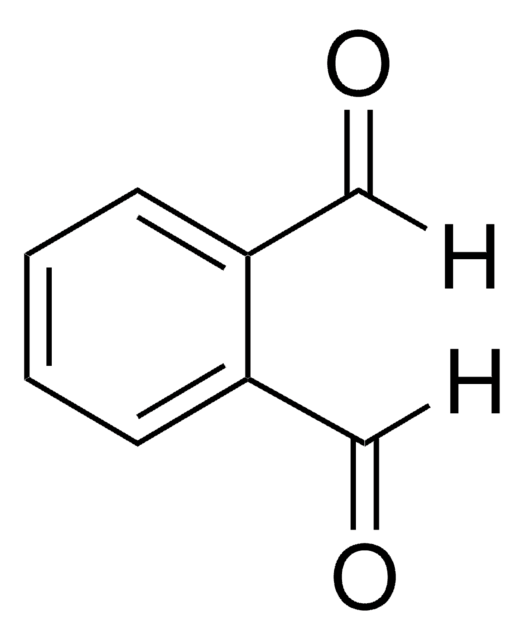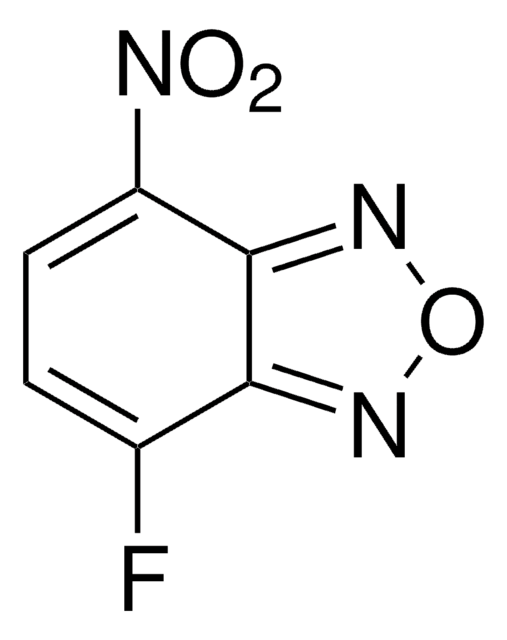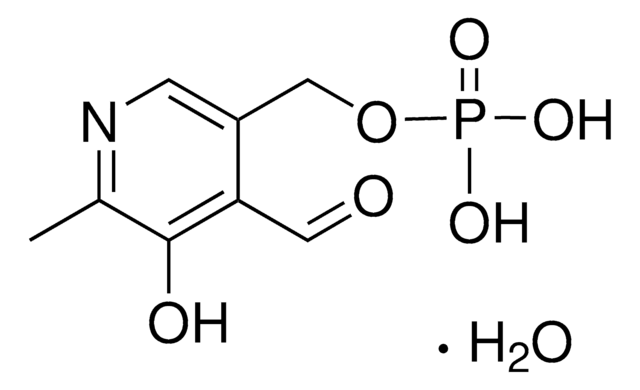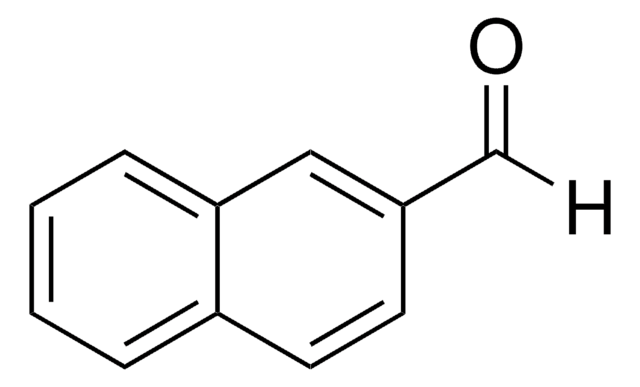70215
2,3-Naphthalenedicarboxaldehyde
suitable for fluorescence
Sinonimo/i:
NDA
About This Item
Prodotti consigliati
Stato
crystals
Livello qualitativo
Impurezze
≤2% mono- and dicarboxylic acid (1H-NMR)
Punto di fusione
131-133 °C (lit.)
132-135 °C
Fluorescenza
λex 420 nm; λem ~480 nm in 0.1 M borate pH 9.3 (after derivatization with glycine [~90 μM glycine, ~20 μM N-])
Compatibilità
suitable for fluorescence
Temperatura di conservazione
2-8°C
Stringa SMILE
[H]C(=O)c1cc2ccccc2cc1C([H])=O
InChI
1S/C12H8O2/c13-7-11-5-9-3-1-2-4-10(9)6-12(11)8-14/h1-8H
ZIPLKLQPLOWLTM-UHFFFAOYSA-N
Cerchi prodotti simili? Visita Guida al confronto tra prodotti
Descrizione generale
2,3-Naphthalenedicarboxaldehyde is a fluorescent derivatization agent of primary amines, amino acids, and small peptides. The reaction between the amino compounds and NDA results in highly fluorescent and stable derivative compounds.
Applicazioni
Caratteristiche e vantaggi
- High Reaction rate.
- High Fluorescence quantum yield.
- No uncommon excitation wavelength.
- No side reactions.
Avvertenze
Warning
Indicazioni di pericolo
Consigli di prudenza
Classi di pericolo
Eye Irrit. 2 - Skin Irrit. 2 - STOT SE 3
Organi bersaglio
Respiratory system
Codice della classe di stoccaggio
11 - Combustible Solids
Classe di pericolosità dell'acqua (WGK)
WGK 3
Punto d’infiammabilità (°F)
Not applicable
Punto d’infiammabilità (°C)
Not applicable
Dispositivi di protezione individuale
dust mask type N95 (US), Eyeshields, Gloves
Scegli una delle versioni più recenti:
Certificati d'analisi (COA)
Non trovi la versione di tuo interesse?
Se hai bisogno di una versione specifica, puoi cercare il certificato tramite il numero di lotto.
Possiedi già questo prodotto?
I documenti relativi ai prodotti acquistati recentemente sono disponibili nell’Archivio dei documenti.
I clienti hanno visto anche
Il team dei nostri ricercatori vanta grande esperienza in tutte le aree della ricerca quali Life Science, scienza dei materiali, sintesi chimica, cromatografia, discipline analitiche, ecc..
Contatta l'Assistenza Tecnica.




![1,8-diazabiciclo[5.4.0]undec-7-ene 98%](/deepweb/assets/sigmaaldrich/product/structures/120/564/5b373e23-1624-489c-8efb-692de0f96ffb/640/5b373e23-1624-489c-8efb-692de0f96ffb.png)

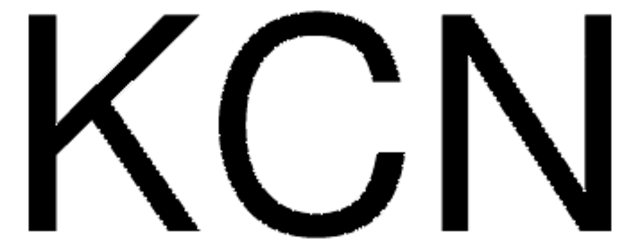
![1,5,7-Triazabicyclo[4.4.0]dec-5-ene 98%](/deepweb/assets/sigmaaldrich/product/structures/171/446/333d560c-cff6-4958-b489-5acfb3057cce/640/333d560c-cff6-4958-b489-5acfb3057cce.png)
